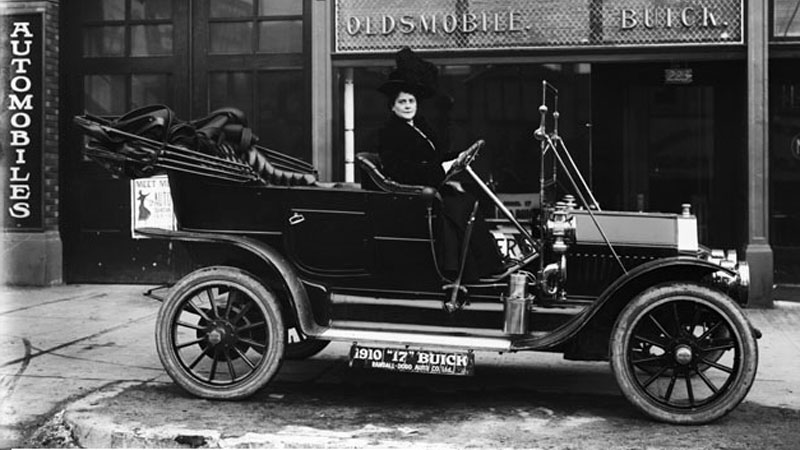Automotive collision avoidance systems designed to increase safety, reduce damages, and lower the number of fatalities have successfully accomplished that task according to a recent study published by the Insurance Institute for Highway Safety (IIHS).
In particular, owners of vehicles with forward collision avoidance systems that include autonomous braking showed the largest reduction of insurance claims filed. While new technologies are greatly advancing safety features (even automatic volume adjustment helps), auto manufacturers have had the consumer’s welfare in mind since the automobile’s inception.
History of Automotive Safety Features

Early Ford Model Ts and competing models were sold without doors; when Ford added them, drivers and passengers received better protection from road debris and side collisions.
Safety glass, tested and used by the military, was the next advance in the industry appearing on cars in the 1920s. No longer considered optional, or even listed as safety features, both improvements saved lives and reduced the severity of injuries.
Many aspects of today’s vehicles taken for granted were initially included to improve the automobile’s marketability by making it seem less of a daredevil’s toy and more useful to the mainstream public.
Because nearly all improvements in the automotive industry relate to safety, an all-exclusive timeline proves to be too cumbersome, but this brief list may be surprising:
Seat Belts – The United States issued a patent in 1885 to Edward J. Claghorn, but they were not even an option until 1949 (Nash) and 1955 (Ford).
Safety Glass – Its first use was in eyepieces for World War I gas masks and later were incorporated into automobile windshields beginning in the 1920s.
Turn Signals – There are U.S. patents as early as 1909, but it was not until 1938 that Buick offered a factory installed flashing signal.
Headlights – The 1880s acetylene lamps were costly to operate and the 1898 electric headlamps burnt out easily, but by 1962, the halogen lamp became mandatory except in the United States where they were banned until 1978.
Air Bags – Oldsmobile offered the first factory-installed air bag to the public in its Toronado, but early designs were not without flaws and reportedly caused some fatalities.
Anti-lock Brake Systems – The first anti-lock brake system designed in 1920 for airplanes had its opponents who thought it was unnecessary technology. Computerized technology greatly improved ABS ability by the early 1970s, thus appealing more to automobile manufacturers.
Computers in the Automotive Industry
Computers have changed the automobile industry. The complete manufacturing process is more productive and safer for employees because of the computerized robots and machinery. Just as the manufacturing process eliminates human error with computers, so does a car’s newer safety features.
Airbags and ABS are among the first of a long line of computerized safety features. Continuing with the intention of making emergency or panicked stops safer is traction control, introduced in 1987.
Traction control applies braking and throttle control alternately to keep traction. Electronic stabilizer control offered a few years later extended traction control by aiding vehicle steering.
Flash to Forward Collision Avoidance Systems
Perhaps the greatest advancement in safety technology are the varying collision avoidance systems now on the market.
The list includes reverse backup sensors, rearview cameras, lane departure warning, enhanced infrared night vision, autonomous braking systems and adaptive headlights. However, it is forward collision avoidance systems that have been proven to reduce accident damage and insurance claims.
Forward collision avoidance systems use a camera or sensor and a computerized system to detect when the vehicle is approaching another vehicle ahead of it too quickly. If an accident is imminent, the system alerts the driver with a visual and audio signal, as well as the tightening of seatbelts in time for the vehicle to stop.
Because of the slight differences in manufactured versions, the IIHS study included this technology and paired it with autonomous braking systems (what automatically applies the brakes if you do not to avoid a crash) or adaptive headlights, which rotate to better light the car’s path on curves and reduce glare for oncoming traffic.
The Highway Loss Data Institute and the IIHS study concur that these collision avoidance systems have undeniably reduced the amount of claims made against auto insurance companies by their policyholders.

Cars do not drive themselves, but technological advances are getting us close. Lane keeping assist will actually steer the car back to the center of the lane if the driver does not.
In addition, Nissan has improved things with the company’s new “Predictive Forward Collision Warning” system that uses a sensor on the front of the car to determine distance and velocity to not only the car in front of the driver, but also the car in front of that one.
This gives the driver even more time to react and avoids certain types of accidents other systems are not able to detect. When there are fewer accidents, there are fewer insurance claims made, what can lower automobile insurance rates.
- 2024 Mazda CX-50: A Compact SUV with Premium Aspirations - Apr 15, 2024
- 2024 Ford Mustang (Iconic Pony Car Evolves) - Apr 4, 2024
- 2024 Ford Maverick (Looks Like a Truck, Drives Like a Car) - Mar 28, 2024

